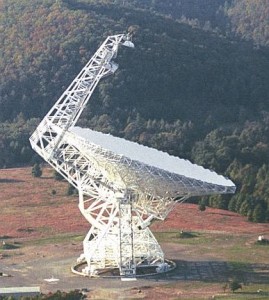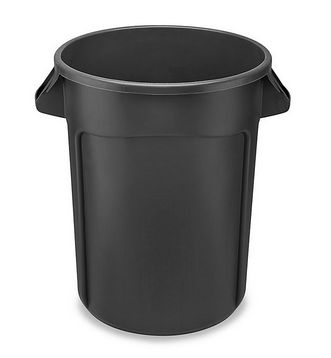
Little did I know my future lay with the NRAO.
As early as the 8th grade, my teacher informed us we needed to choose a career. I chose astronomy. My mother informed me, “No. There is no future in astronomy.” I was downhearted!
Her friend’s husband worked for Union Carbide. I asked Mom if chemistry was acceptable? She said that was fine.
Curiously, in high school I became a close friend of a kid from Canada who loved chemistry, Charles Harris. I greatly admired him. He was instrumental in my growing appreciation of chemistry.
From College to Employment
Beginning in my junior and senior years at high school, and later at college, I found myself drawn to organic chemistry and to quantum chemistry. These subjects were leading me away from the astrochemistry I might have become involved with, given differing circumstances.
About nine years after graduation from Drexel University, I moved from New Jersey to Virginia. I needed a job. My to-be mother-in-law spotted one in the papers. So I applied for employment and was signed on by the National Radio Astronomy Observatory (NRAO). My immediate supervisor was Dr. Sander Weinreb. The year was 1982. I needed work in order to marry.
On-the-Job Experience
I was interviewed by three people – the head of NRAO personnel (Monroe Petty), the head of the Central Development Lab (Sander Weinreb), and his assistant (Mike Ballister). College was not a requirement. It was assumed the position of electroplater/electroformer needed few qualifications. However, the work was more demanding than management realized. Although they felt I was overqualified, they hired me. And they gave me the upper end of the pay scale publicly offered. Now that I was hired, I was involved with chemistry and astronomy!
After just a short while my supervisor regretted he’d hired me. The quality of my work left little to be desired. You see, I’d had no plating experience. In addition, I was trained by a high school graduate who didn’t know how to maintain electroplating baths. His mental state was confused. In all fairness, he’d just gone through a devastating divorce, poor fellow. Me? I was given very polite notice I should seek employment elsewhere, just as my predecessor had been. At the last moment (how glad I was) I successfully turned things around. The fellow two employees before me was invited in to help me. As a result, I began to make progress. I was invited to stay!
NRAO Projects I Participated In
While I gradually increased in my capabilities, I did not have a clue what the projects were I was working on. Terms such as VLA and VLBA were foreign to me (Very Large Array and Very Long Baseline Array). In addition, I performed outside plating jobs for the Naval Observatory and the University of Virginia. Even stranger, I was given a railroad spike or another peculiar object to clean, electropolish, and electroplate as an object of presentation to dignitaries.
Electroplating and Electroforming
Almost all of the work I was called upon to do involved one of two methodologies: electroplating or electroforming. Electroplating called for the application of a very thin coating of adherent metal for protective or cosmetic purposes – generally on the order of 50 to 1,000 microinches (millionths of an inch). Often, though not always, that metal was gold.
Electroforming is similar to electroplating, except primarily for the thickness of the coating applied. Electroforming ran typically from 1/8” to 2” coating thickness. The metal chosen was usually bright copper. Electroforming often involved a dissolvable metal mandrel.
An aluminum blank with specific machined features (the mandrel) was copper plated. The outside would be machined to meet external dimensional requirements. The aluminum would next be dissolved out, leaving the hollow electroform with its specific internal measurements. Electroforming was employed because it was not possible to machine the inside.
My Most Demanding Assignment

One day, Dr. Weinreb asked if I felt capable of handling an assignment. I don’t know precisely why I said I did. I was certainly being overly optimistic. But accept it I did. I was to take a large, polished ovoid aluminum mandrel (about 12” to 18” long) and electroform it in nickel, rather than copper. It had to be flawless. The finished tank was to hold liquid helium!
What was so unusual about this assignment? Well, as if it wasn’t difficult enough to achieve perfection with baths and methods I was familiar with, I had no nickel baths and almost no experience nickel plating. Also, I had no equipment of the correct size. I had to develop two nickel baths (one for an initial thin or flash coating, the other capable of smooth growth of significant thickness).
I designed two baths. I bought a plastic trashcan to hold my nickel-electroforming bath. Needing a bit of assistance, I enlisted the head of the machine shop, Welford C. Luckado. “Lucky” wasn’t overly fond of me. But he was a talented and a relatively patient fellow. Don’t ask me why he agreed. We struggled, but we went through the process as planned. Would it work?
Two Flaws
Aw. There were two flaws in the electroformed mandrel. I felt I had been a failure! But the boss was pleased. Why so? Because two holes needed to be drilled in the finished helium tank, and the holes were drilled where the flaws were located. SUCCESS! While I had, in fact, not succeeded in the ultimate sense, I had accomplished the task to specifications.
It had been my most demanding job and I had been (perhaps) foolish in accepting it. But I love telling the story of one of my greatest secular successes ever. The odd thing is – the design was discontinued shortly after the tank was successfully employed.
Wrapping It Up
I hope I haven’t bored the reader to tears. Let me wrap this up with a few concluding statements. I had many interesting experiences. I met many technically minded and successful engineers and scientists. The pay wasn’t bad. The conditions were pleasant. The people were friendly and cooperative. In short, my mother would have been satisfied she had done her job. I am retired now, but I enjoy seeing my former work mates. Wouldn’t it be nice if all of us could say as much?
Note: You might also enjoy Electroforming Copper Feedhorns Using Aluminum Mandrels
Resources:

It’s always interesting learning about others’ employment paths and why and how they got the jobs they did. I have also been willing to try jobs well outside my comfort zone. Sometimes you win, sometimes you lose! But you always LEARN something.